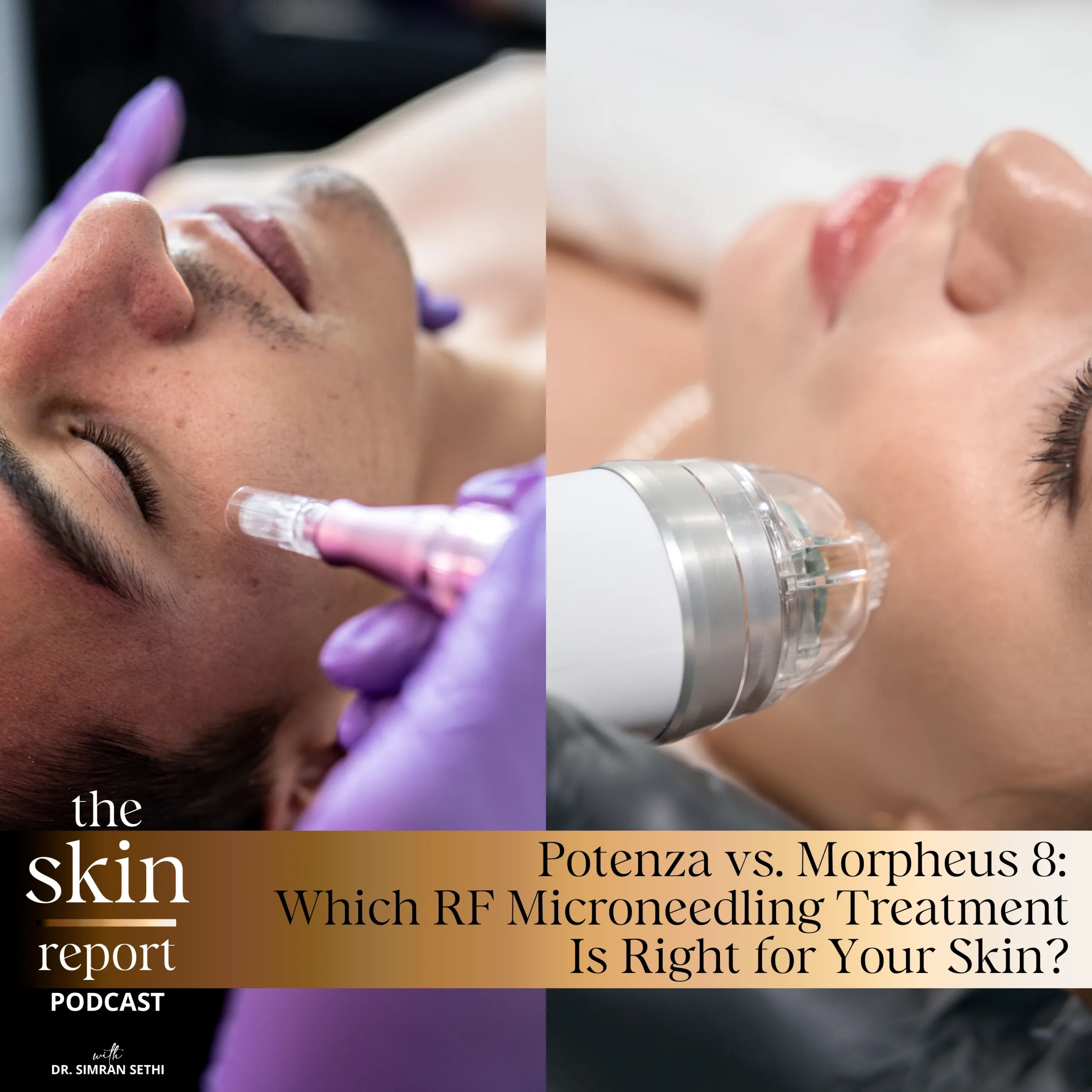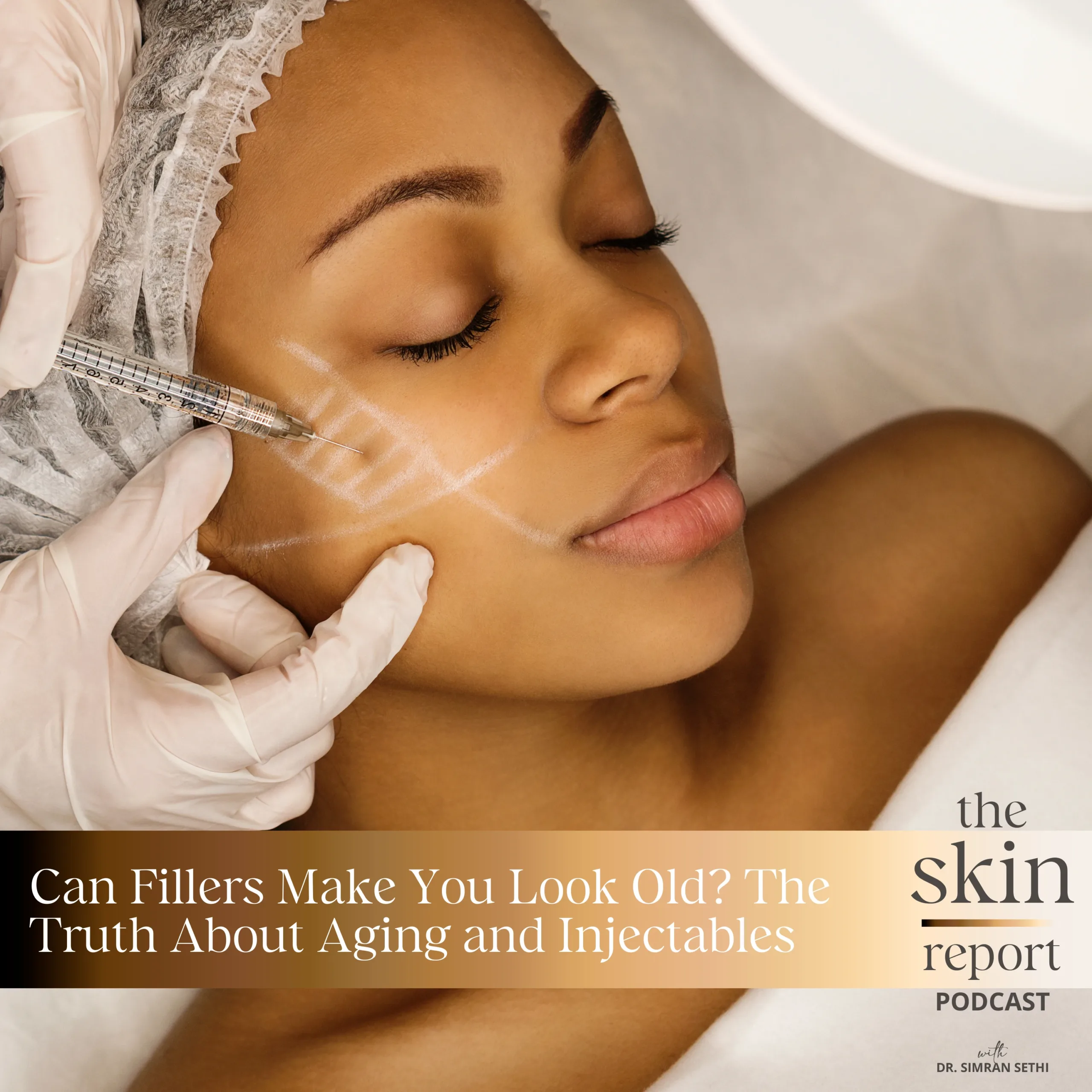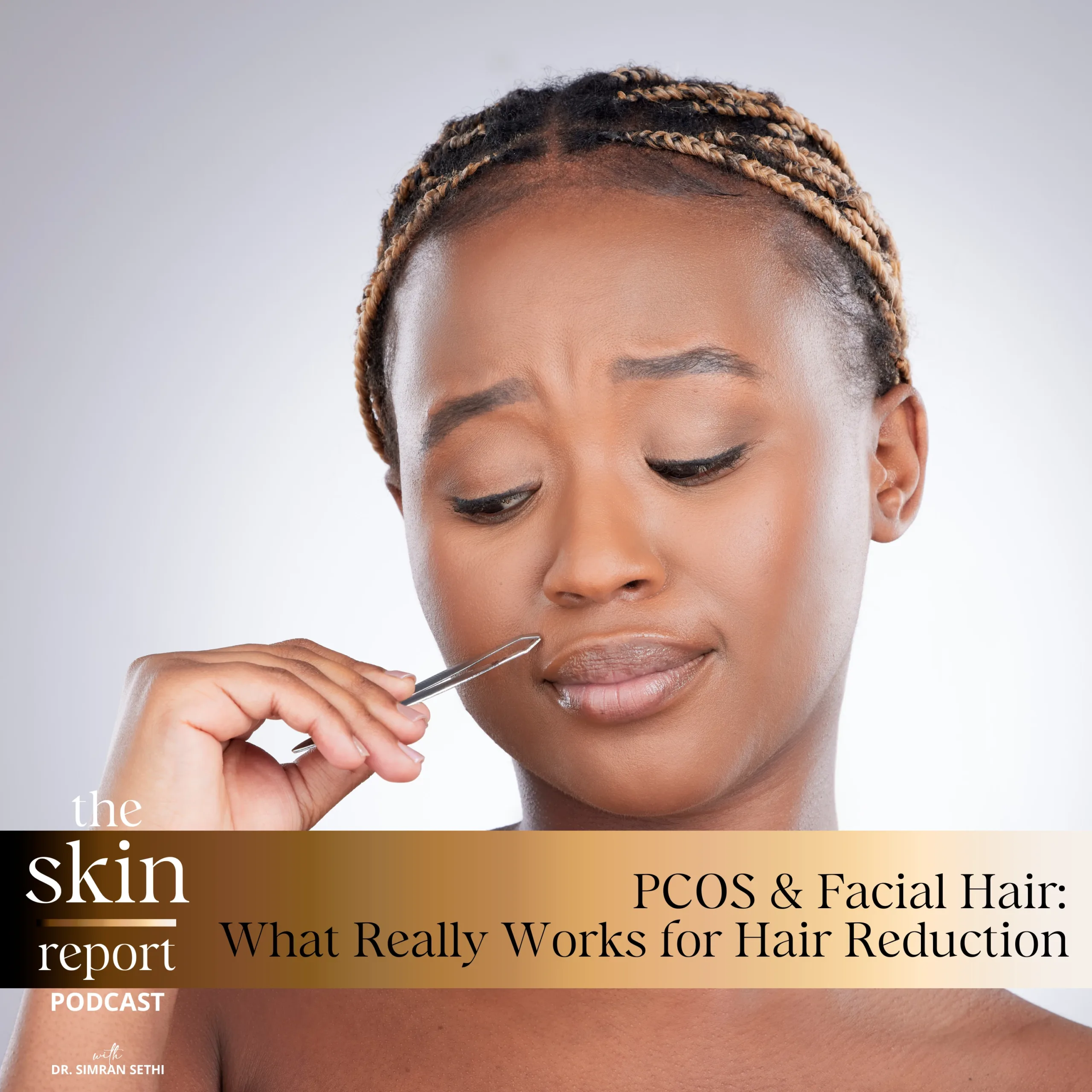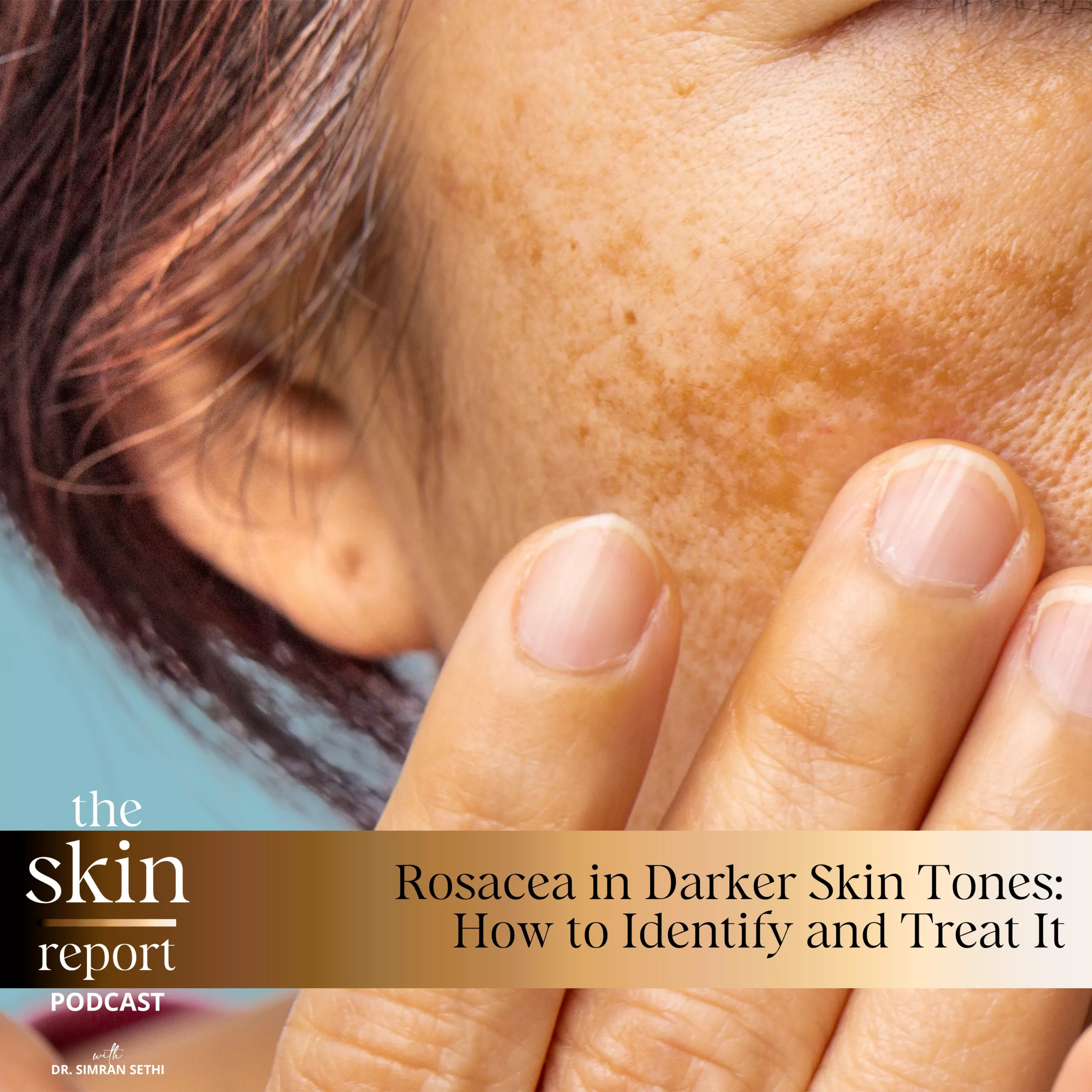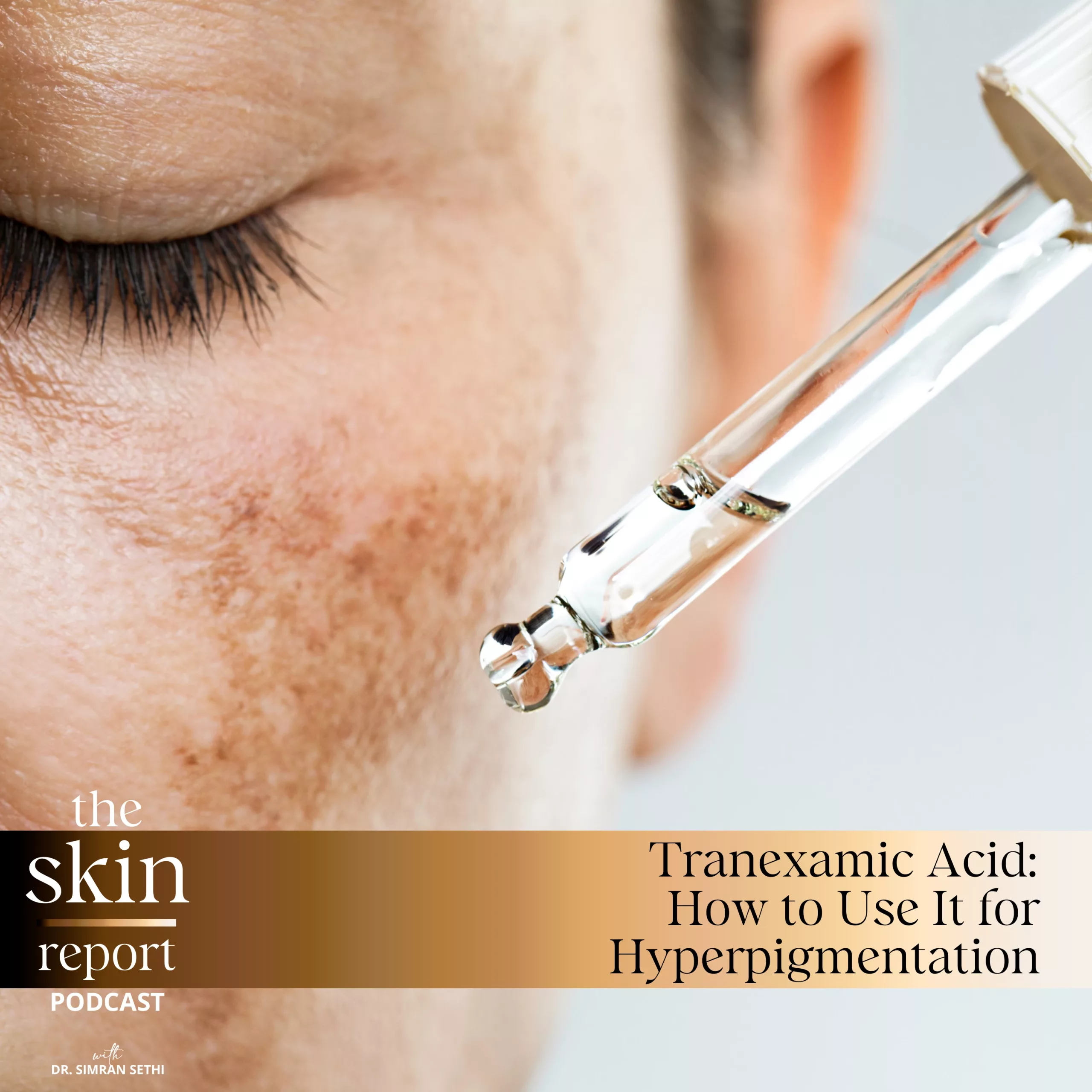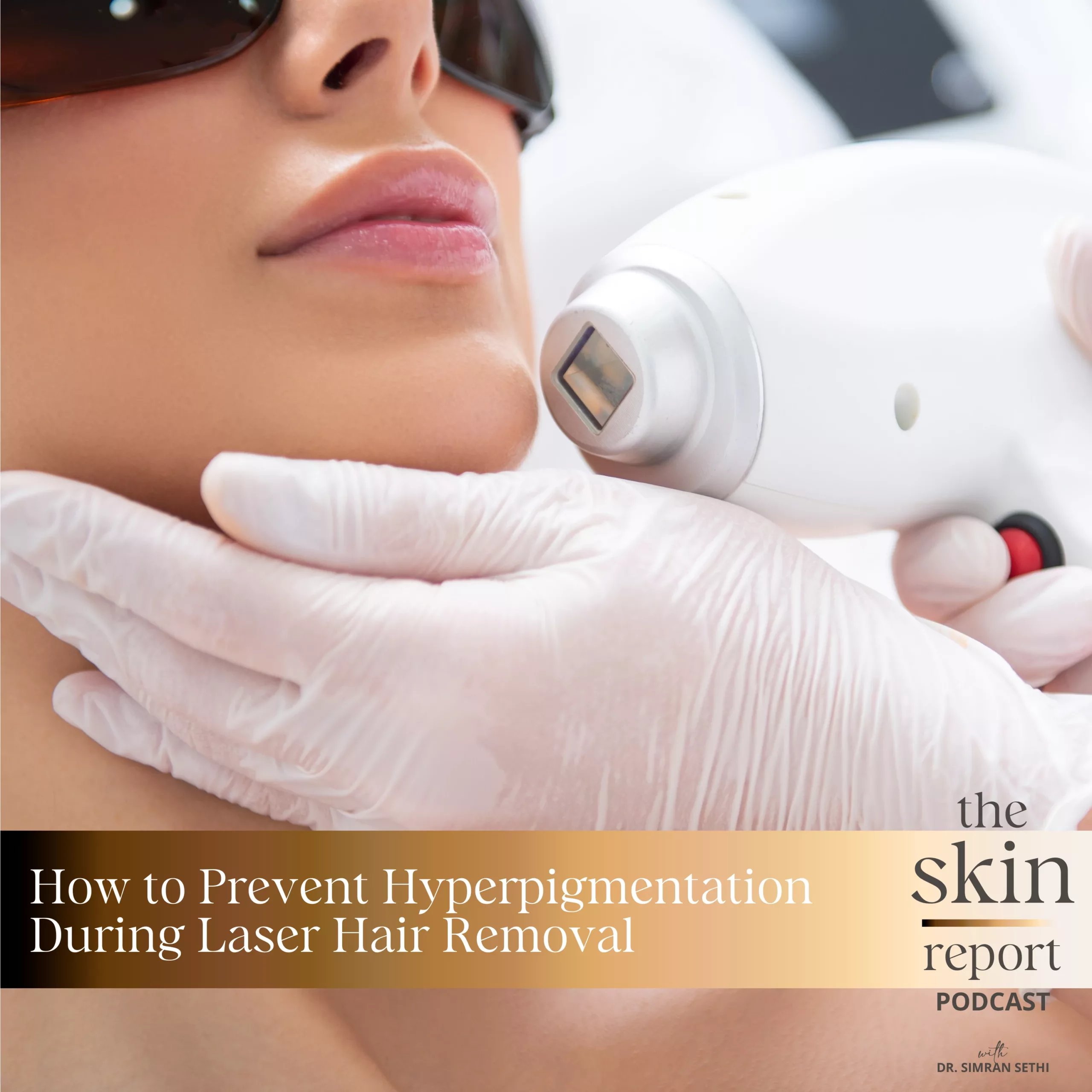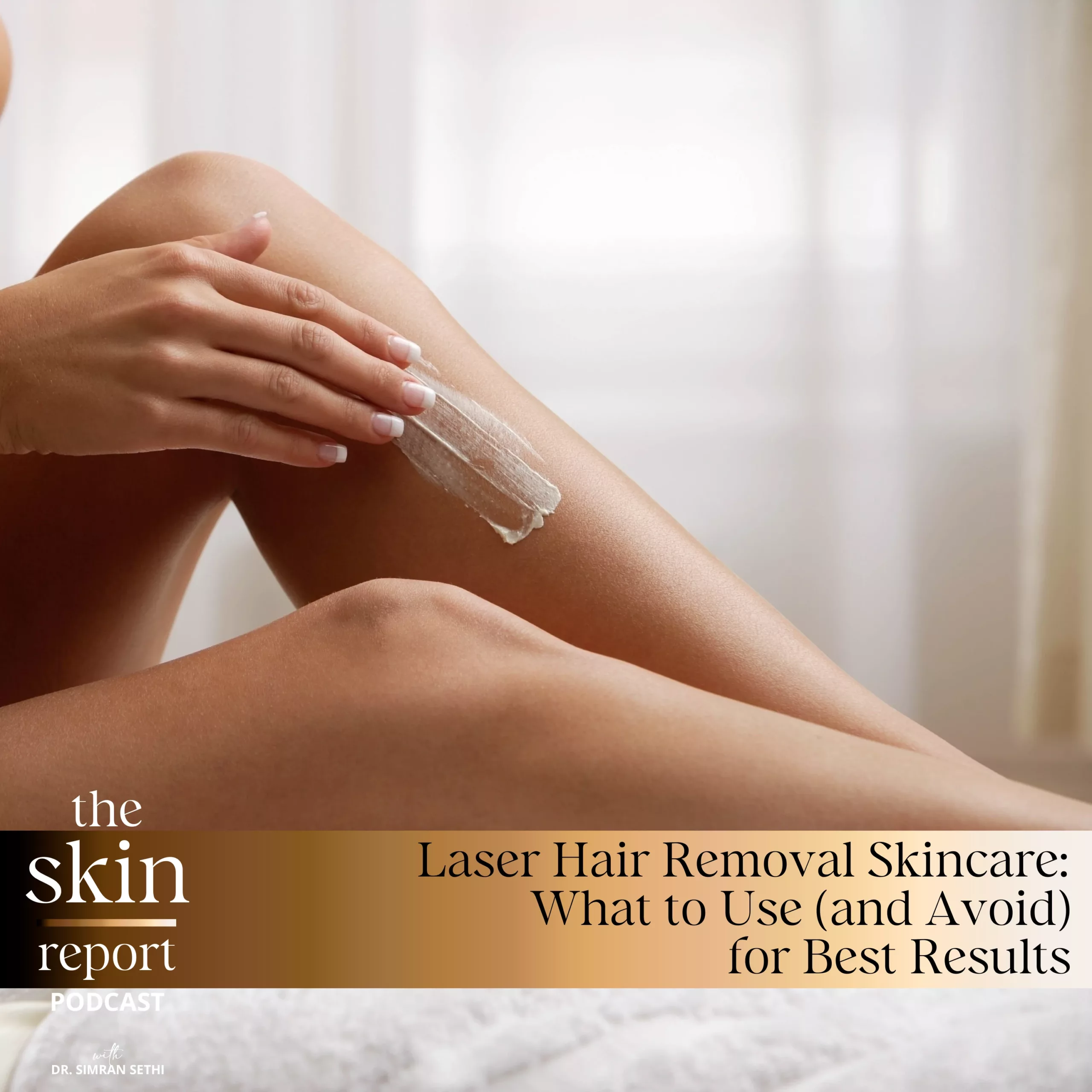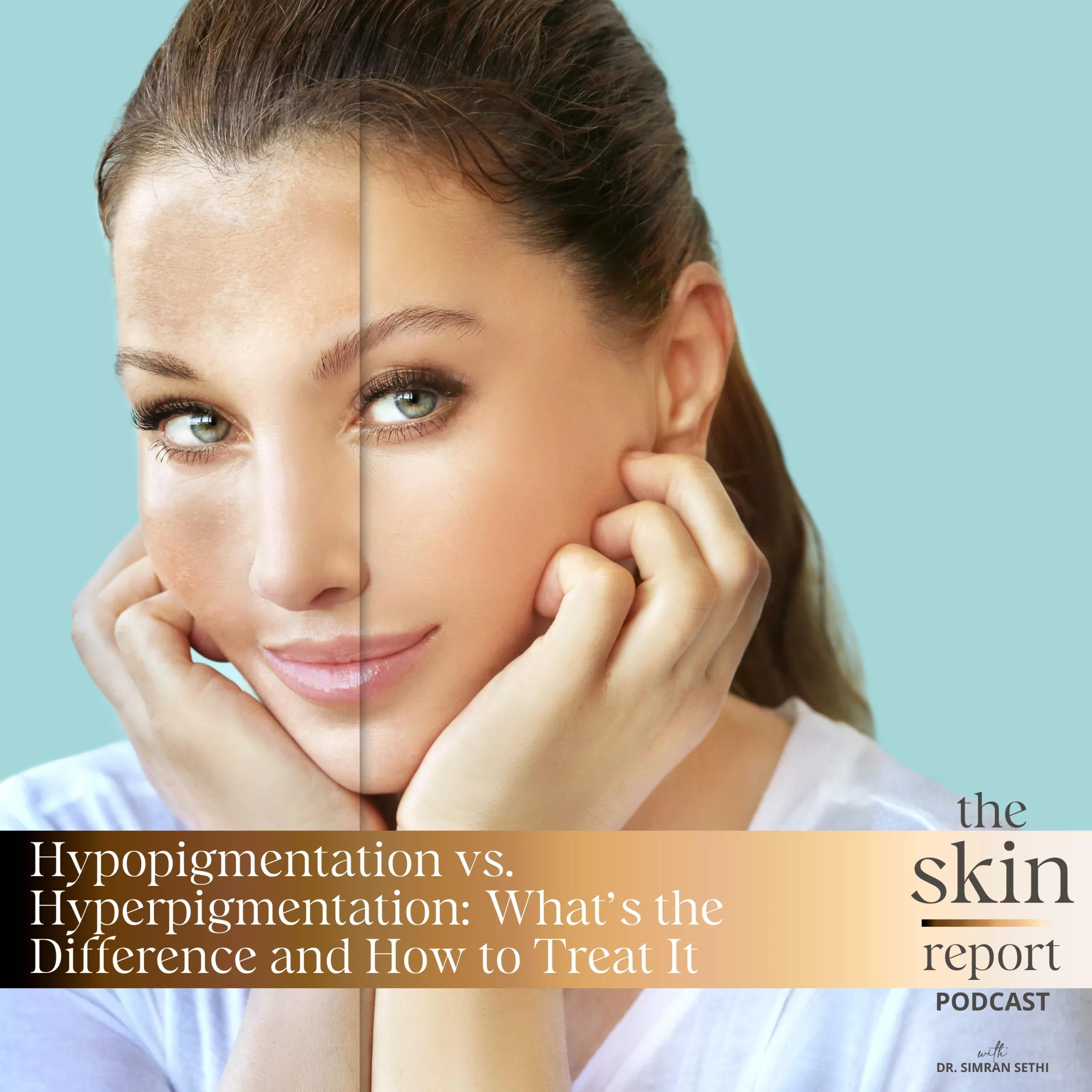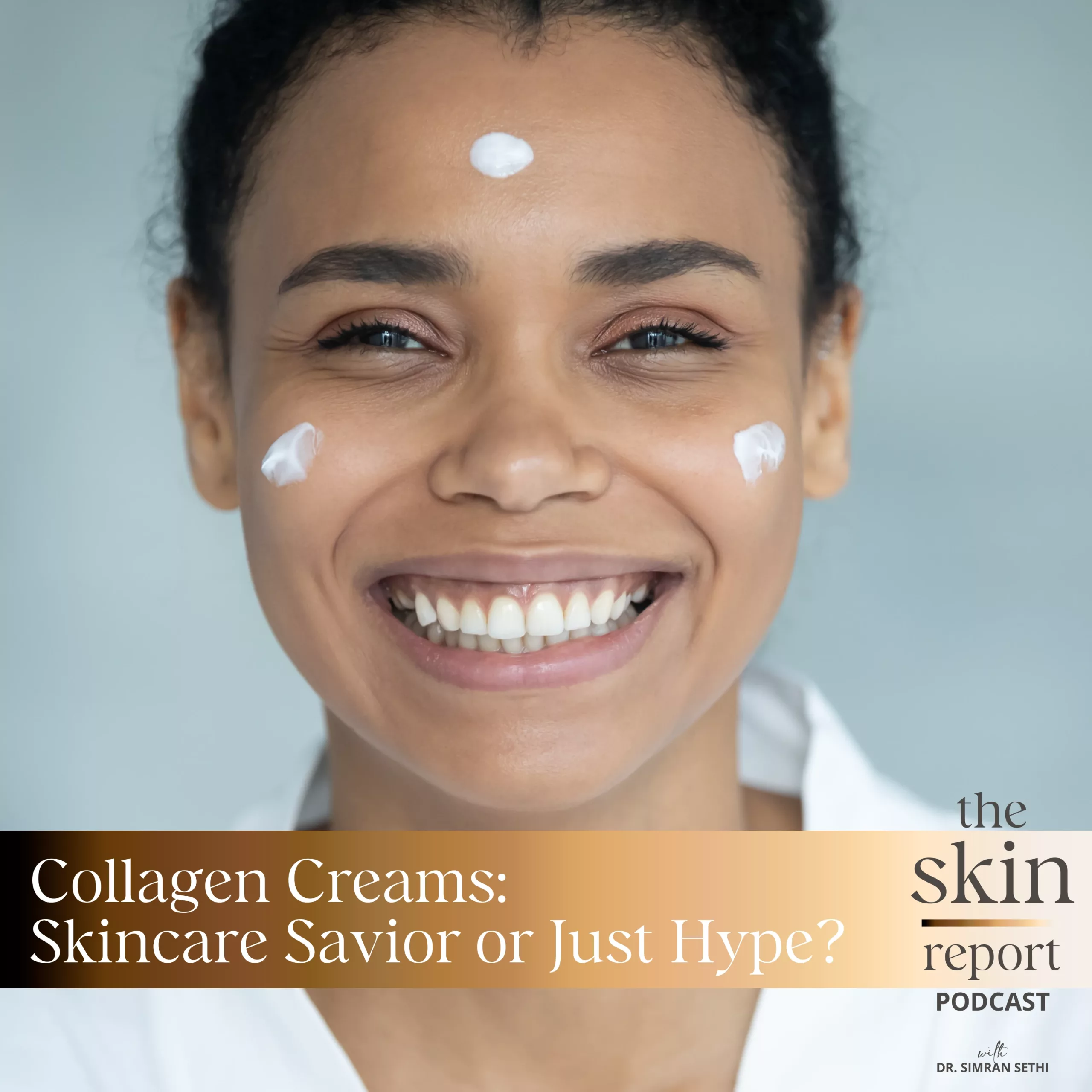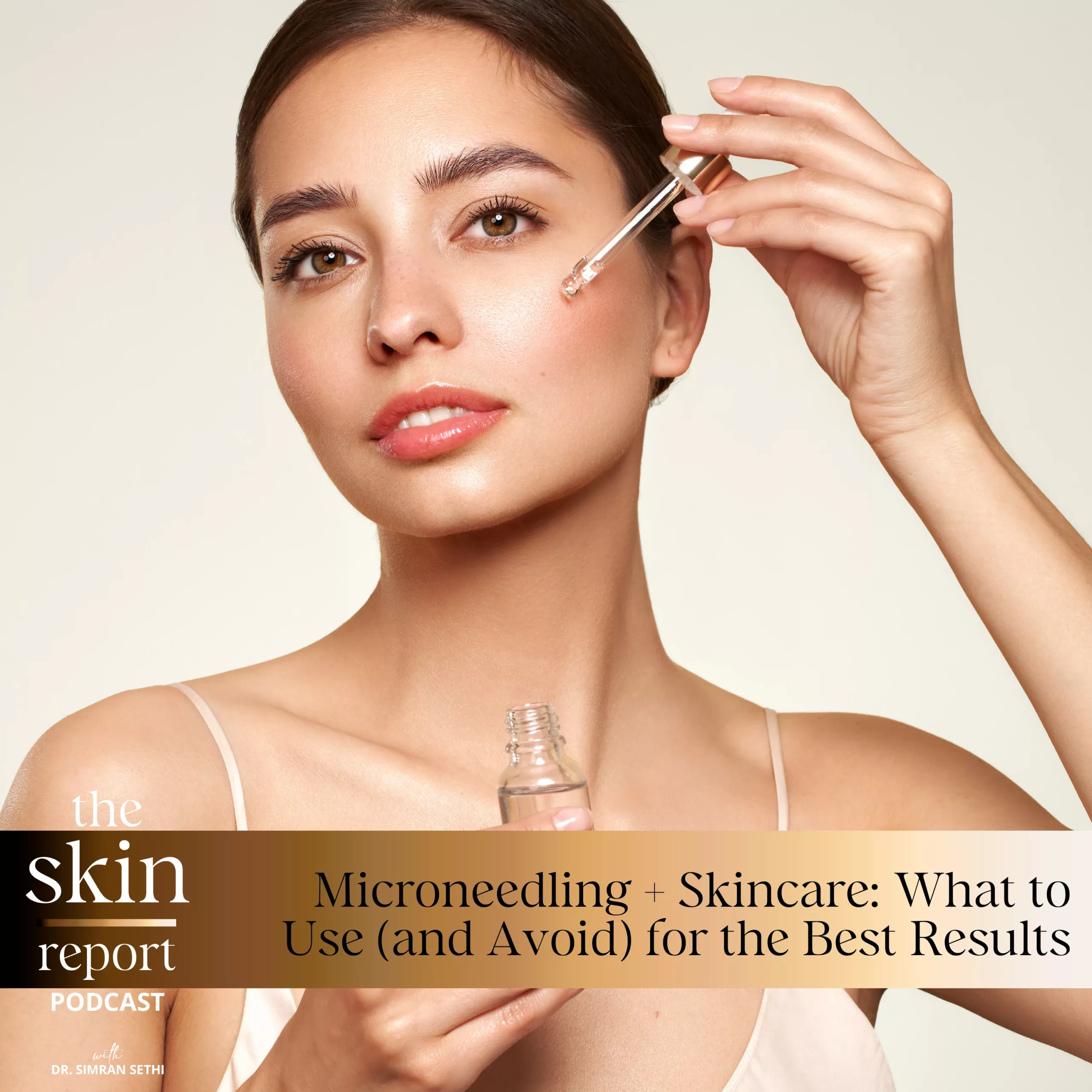Sunscreen protects us from the sun, but it may surprise you to hear just how important it is for our skin’s health. Regardless of its tone or type, all skin is subject to sun damage if left unprotected, especially during summer. Furthermore, the lack of common knowledge surrounding sun protection means that many people are unaware of the different types of sunscreens, how they work, and which type can appropriately protect their skin from sun exposure.
The Skin Report is a podcast created to educate listeners on methods to improve skin health for people of all ethnicities and ages. On this episode, host Dr. Sethi discusses all things sunscreen and sun protection. She breaks down common SPF misconceptions, explains the differences between chemical and mineral sunscreens, and shares essential information for determining the best sunscreen for your skin. Sunscreen protects against UV radiation’s aging and cancer-causing effects, making it a vital part of skin health. So listen to this episode to learn more about sun protection and how you can stay safe from the sun all year long.
Follow and DM a question for Dr. Sethi to answer on The Skin Report Podcast: RenewMD
Beauty Instagram: https://www.instagram.com/renewmd_beauty/
RenewMD Beauty Medical Spas, California: https://renewmdwellness.com/
https://tropicsport.com/pages/sunfacts#
https://tropicsport.com/blogs/posts/what-does-spf-stand-for-what-is-spf
https://www.almanac.com/content/uv-index-scale
https://www.skincancer.org/skin-cancer-information/skin-cancer-facts/
https://www.nfcr.org/blog/9-must-know-facts-about-sunscreen/
https://www.drdoppelt.com/physical-vs-chemical-sunscreen/
https://www.drdoppelt.com/sunscreen-myths-busted-part-1/
https://www.healthline.com/health/physical-vs-chemical-sunscreen#chemical-sunscreen
https://www.self.com/story/heres-why-getting-a-base-tan-is-total-bs
https://www.consumerreports.org/sunscreens/dark-skin-sunsceen-need-a1037614659/
https://www.consumerreports.org/cancer/protect-yourself-from-skin-cancer-a1048173542/
This transcript was exported on July 12, 2022 -view latest version here.
Skin care can sometimes feel overwhelming, whether it’s finding the right products, ingredients, or treatments. There’s a lot out there, but not always for women of color. That’s why I set out to educate myself and others so that we can all feel beautifulin our skin. Hello, and welcome to the Skin Report. I’m Dr. Simran Sethi, an internal medicine doctor, mom of three and CEO and founder of RenewMD medical spas, and Skin by Dr. Sethi. Today I want to talk about the different types of sunscreen, how they work, and which may be the best for you.
First, I want to break down a few facts and misconceptions about sunscreen before we delve into chemical and mineral sunscreens and their differences. SPF stands for a sun prevention factor, and it works like this. Asunscreen with SPF 15 means that it would take 15 times more sun exposure to burn your skin than if you weren’t wearing sunscreen at all. Similarly, an SPF 30 means that it would take 30 times the UV light required to redden your skin than if you were unprotected. For example, if it took one minute for your skin to darken or get red in the sun without sunscreen, by applying an SPF 30, your skin would not darken for 30 minutes. That being said, with the majority of the U.S. experiencing a higher UV index during the summer, this may take no time at all. With daily UV index is reaching 7, 8, 9, many skin tones will experience reddening in as little as 15 to 30 minutes.
Your 30 SPF sunscreen doesn’t make you invisible, but it does provide you protection for a decent amount of time in direct sunlight. A general rule of thumb is to reapply sunscreen every two hours if you are in direct sunlight for extended periods of time. Even those with darker skin types should still apply protection and will need it. All skin tones will be exposed to the same strength of UV rays on a given day. As darker skin tones have more melanin, they can block race from penetrating more effectively, which is why their skin rarely experiences sunburns and does not develop wrinkles due to UVexposure as fast as lighter skin tones do. However, studies have shown repeatedly that just because darker skin tones do not burn as easily in the sun does not mean that they have full protection from skin cancers and aging. The additional melanin in darker skin tones offers about an SPF of 13 without wearing sunscreen compared to lighter skin tones, which means no matter what your skin color, wearing sunscreen daily is essential to keeping skin protected from aging and skin cancers.
The American Academy of Dermatology and the Skin Cancer Foundation both recommend using sunscreens with an SPF 30 or higher. After all, why not be protected? As we’ve mentioned before, about one in five Americans are diagnosed with skin cancer according to the Skin Cancer Foundation. More Americans are diagnosed with skin cancer than any other cancer combined. However, when caught early, the five year survival rate for melanoma, one of the deadest forms of skin cancer, is as high as 99%. While skin cancer is less common in people of color, it still occurs. Unfortunately, many doctors don’t even think about skin cancer when it comes to their patients with darker skin. If you have a suspicious skin lesion, don’t hesitate to seek attention no matter what your skin tone is. Skin cancers like melanoma can be deadly if diagnosed late, while other less aggressive skin cancers like squamous cell carcinoma are generally slow growing, but can lead to skin disfigurement if addressed at a later stage. Just wearing an SPF of 30 or greater is effective enough to prevent skin cancer. And it has the added benefit of preventing premature skin aging as well.
It is estimated that 90% of skin aging is caused by the sun. According to a study publish in the Annals of Internal Medicine, those who wear anSPF of just 15 or higher daily experience 24% less skin aging compared to those who don’t wear sunscreen daily. When it comes to adequate sun protection, your SPF will not work for you if you are not applying enough. In fact, applying the correct amount of a SPF 30 sun screen may give you more protection than applying a small amount of a SPF 50 sunscreen. I recommend putting about one teaspoon’s worth of sunscreen on your face and about one shot gloss worth on your body. And if you’re going to be in continuous sunlight for extended periods of time, like while hiking, also consider wearing a hat and long sleeve clothing to add an additional layer of protection. We’ve talked a lot about SPF, but another aspect of sunscreen that is important to consider is howit provides protection. This is where we begin our discussion of chemical versus mineral or physical barrier sunscreens.
The first and probably most popular type of sunscreen is chemical barrier sunscreen due to its easy application. Chemical sunscreen uses ingredients such as avobenzone, octinoxate and oxybenzone that have to be absorbed into the skin to provide protection. When your skin is exposed to UV rays, these chemicals will absorb the UV rays causing a chemical reaction and the rays are converted to heat, which then releases from the skin instead of being absorbed and damaging the skin. Chemical sunscreens come in all forms, usually creams and sprays. This type of sunscreen tends to be thinner and spreads more easily on the skin. It’s also easier to combine other skin nourishing ingredients like peptides or vitamin C with these formulations, which makes the sunscreen even more appealing to consumers. Regardless of their popularity, chemical barrier sunscreens have two major disadvantages, which is why I never recommend chemical sunscreens to my patients.
First because chemical sunscreens have to get absorbed into the skin, they’re more likely to cause skin sensitivities and even clogged pores. Interestingly, the use of chemical sunscreens has been banned in places like Australia and Hawaii as the chemicals in these sunscreens wash off swimmer’s skin and have led to damaging coral reefs. I feel that if a chemical is killing multiple species, it is likely not a safe product for humans to apply on a daily basis. Second, remember that chemical sunscreens have to first absorb into the skin, which means that they’re not even active for about 20 to 30 minutes after application. This means that you have to wait for half an hour before you can get any protection from your sunscreen. Most people do not know this, and it is inconvenient to have to remember to apply sunscreen way before you’re ready to go out. Finally, everyone’s skin is different and what products they have on their skin to start with will affect absorption of a chemical sunscreen.
For example, if a moisturizer or serum has a large molecular rate oil, it will likely prevent most of the chemical sunscreen from absorbing into the skin. With so much variance in absorption of a chemical sunscreen, you may not be getting the amount of protection you think you’re getting. I know at this point, you’re probably feeling pretty turned off from using sunscreen. But when we come back, I’m going to tell you everything you need to know about mineral or physical barrier sunscreens that provide superior and safe sun protection for all skin types, skin tones, and ages.
Mineral sunscreen, otherwise known as physical sunscreen, utilizes minerals such as titanium dioxide and zinc oxide to create a physical barrier on the skin to block UV rays. Unlike chemical sunscreens, mineral sunscreen is effective the moment you put it on your skin. This means you do not have to wait 20 to 30 minutes for the sunscreen to become active and can go out as soon as you apply it. Due to the variety of different chemicals in chemical sunscreen, those with rosacea, sensitive skin and even children may experience redness, breakouts, and irritation. For individuals who are more prone to breakouts, skin sensitivities, or have skin conditions like rosacea, mineral sunscreens are a safe and effective alternative to chemical sunscreens. Mineral sunscreen is also safe to use when pregnant and on toddlers. Though, I would still avoid applying it to babies under six months just because their skin is more sensitive in general. But if you absolutely had to pick a sunscreen to apply on an infant, mineral sunscreen would be the safest and most effective choice.
Now, when it comes to this type of sunscreen, you will most likely need to apply it more frequently as it can wash off your skin more easily with sweating than chemical sunscreens that absorb into the skin. Physical barrier sunscreens also tend to have a thicker texture than chemical sunscreens, making it harder to rub in and more likely to create white cast on the skin, especially in darker skin tones. And as formulations get higher in SPF, the more pasty and less variable they get.
Luckily there are so many different formulations of tinted mineral sunscreens that are actually more protective due to the tint and can spread seamlessly onto your skin no matter what skin tone you have. In general, I found that mineral sunscreen formulations that are tinted with an SPF between 30 to 50 offer great protection while blending in beautifully with everyone’s skin tone. In fact, the sunscreen in my skincare line is a tinted SPF 40 mineral sunscreen that does not only provide UVA and UVB protection, but also protects the skin against blue or HEV light. We will discuss the importance of blue light protection in a later episode, but just know that blue light is abundant both inside and outside and has been shown to cause premature skin aging.
Finally, don’t be too worried about maximizing the SPF in your sunscreen as using an SPF higher than 50 increases sun protection marginally and makes the sunscreen very pasty and difficult to spread, which also makes it less likely to cover the skin properly. These kinds of sunscreens are widely available at retailers like Target, drug stores and even online. While the SPF is always indicated on the front of the label, you have to read the active ingredient list on the back to see if the sunscreen is a mineral or chemical barrier one. If the active ingredient list includes titanium or zinc oxide, it is a mineral or physical barrier sunscreen and safe to use.
We’ve covered some important aspects of sunscreen like SPF, chemical versus mineral. But now I’m going to talk about what actually makes a sunscreen water or sweat proof.
Although there are multiple sunscreen brands that claim to be waterproof, sunscreen itself is not waterproof. If the packaging tries to suggest otherwise, this is misleading. The FDA bans sunscreens from labeling themselves as water and sweat-proof. However, there are many chemical sunscreens that can be water and sweat resistant because they absorb into the skin. Luckily, there are also some mineral sunscreens that can stay on wet skin for longer periods of time, but may not offer as much protection as chemical ones do in water. If you are swimming, especially in places where chemical sunscreens are banned, you can use a mineral sunscreen, but always remember to reapply as soon as you are out of the water. The FDA allows sunscreens to be labeled as water resistant for 40 or 80 minutes if it can maintain its SPF levels after being exposed to a hot tub. Other countries have higher levels of water resistant testing, such as Australia, which requires SPF levels to be maintained after being exposed to water for 240 minutes or four hours.
When it comes down to picking the best sunscreen for yourself, you may want to look at your skin type, tone and lifestyle. Do you have sensitive or acne prone skin? Do you have a darker complexion and have found that most sunscreens create a white cast on your skin? For almost all my patients, I recommend a tinted mineral sunscreen with an SPF of 30 to 40, as it provides the most protection in a non-comedogenic and safe formulation that also blends evenly into the skin. If you play a lot of sports or go to the pool or beach often, remember to reapply your mineral barrier sunscreen at least every two hours. However, and most importantly, just remember that any sunscreen is better than not wearing one. And as long as you’re using an SPF of 30 or greater daily rain or shine, indoor and outdoor, you will be protected from the aging and cancer causing effects of UV radiation.
If you’d like to learn more about science backed skincare or medical aesthetic treatments, please subscribe to and turn on notifications for The Skin Report so you alwaysknow when a new episode is up. If you have a skincare question or want to make an episode topic recommendation, please message me at theskinreportbydrsethi.com, which is linked in my show notes, and I’ll be sure to answer your question in an episode soon.Thank you all for listening today. I hope you have a great summer full of fun plans and glowing skin.
Transcript by Rev.com


